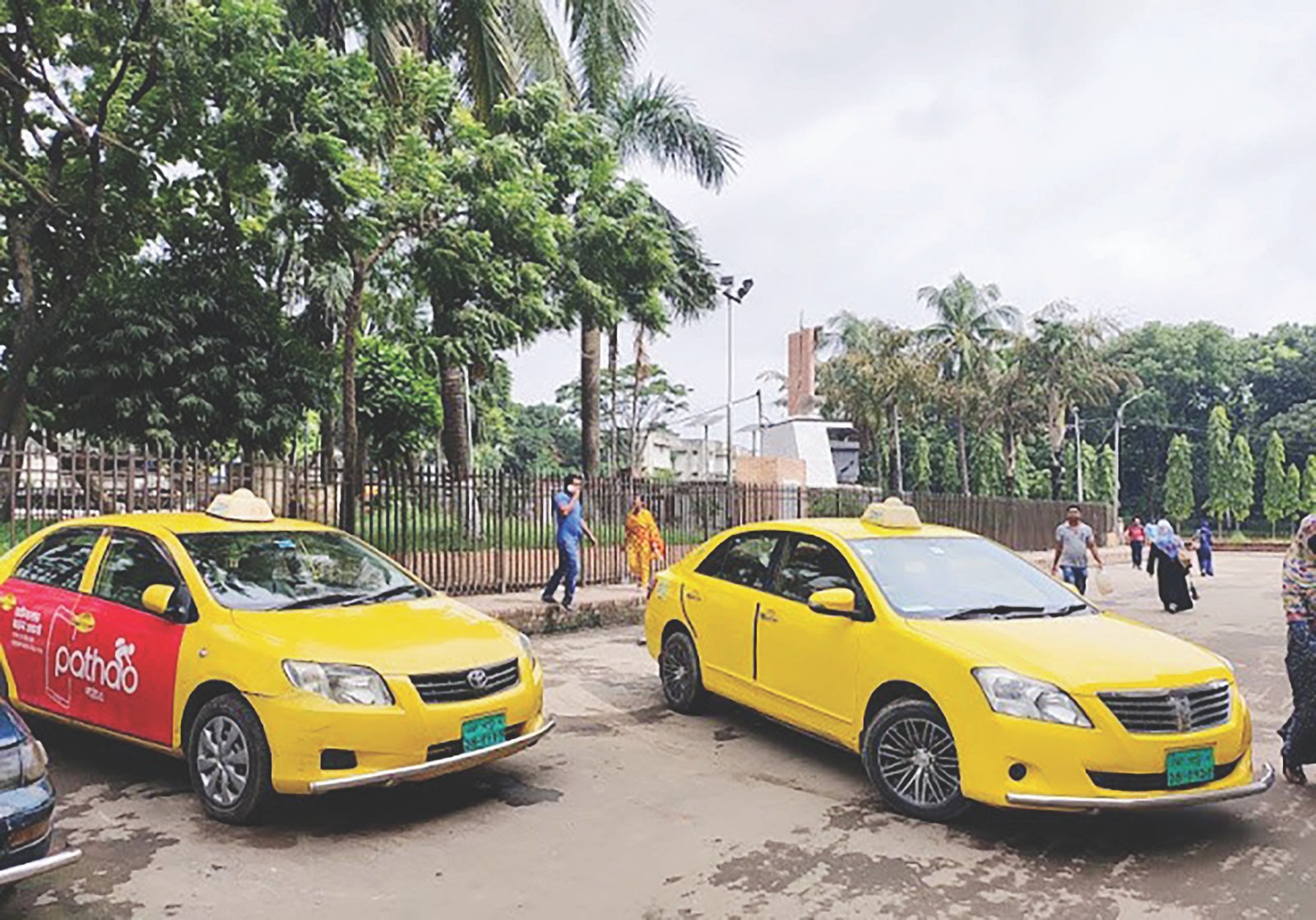Commuting woes compound

Fifteen years after the launch of the government’s ‘taxicab policy” aimed at ensuring safe, affordable and reliable urban transport, yellow taxicabs have virtually vanished from the streets of Dhaka and other major cities in the country.
Despite regulatory efforts, ride-sharing apps and private vehicles have taken over as the primary mode of city travel.
Published as a gazette in 2010, the policy permitted the operation of taxicabs in specific areas using duty-free imported vehicles. But the data from Bangladesh Road Transport Authority (BRTA) and field observations reveal that the plan has not been implemented fully.
Although 30,136 taxicabs are registered in Dhaka, BRTA records show that 186 of yellow taxicabs were imported duty-free between 2015 and 2019. But the fact is that only a very few of yellow taxicabs are seen running on the roads.
According to BRTA, two entities—Toma Construction & Co. Ltd and Army Welfare Trust—were given permission to import 1,300 taxicabs. Of them, just 425 vehicles were eventually pressed into service. Among these, 250 taxicabs belong to Toma.
Talking to Bangladesh Post, Army Welfare Trust said that at present, they have only 25 taxicabs carrying passengers. The remaining cabs have been converted into private cars after their economic lifespan expired while some are now put in the garages.
According to BRTA, Army Welfare Trust has got customs clearance for 57 out of 150 expired taxicabs. The remaining 97 taxicabs are currently being converted into private cars.
BRTA confirms that 1500cc taxicabs had economic life of 10 years, but their lifespan expired in 2023. After paying tax to the National Board of Revenue (NBR), both the companies reclassified the vehicles from “Pa” (commercial) to “Ga” (private) and completed the registration process.
In 2016, Toma Construction signed a deal with Pathao on ride-sharing but within a short time, the move was halted. As per the latest information, Toma Construction has converted their taxicabs into private ones.
After expiry of economic life, according to taxicab policy, cars cannot be used as taxicabs if duty-free cars can be handed over to individuals.
However, BRTA is working on a new draft policy to relaunch taxicab services with more flexible criteria. The draft proposes allowing 500 taxicabs in Dhaka, 300 in Chattogram, and 100 in each divisional city initially.
The draft policy sets the highest number of taxicabs for all companies---maximum 20,000 in Dhaka, 5,000 in Chattogram, and 1,000 each in Sylhet, Khulna and Barishal.
Reducing the minimum fleet requirements for companies from 1,000 to 500 vehicles in Dhaka. Mandating that all taxicabs use a dedicated app. Permitting advertisements under Road Transport Act. Introducing a 15 percent fare surcharge from midnight to 6:00 am.
Formation of a permanent committee to evaluate service standards and put forward recommendations.
However, there is no need for new policy, said Dr M Shamsul Haque, a professor at BUET’s Civil Engineering Department. He also criticised BRTA's capacity to manage public transport system. “Chaos is created on our roads mainly due to BRTA’s mismanagement of ride-sharing, CNG and bus services,” he added.
A former BRTA director echoed the same, blaming the dominance of ride-sharing firms and auto-rickshaw syndicates for the collapse of taxicab services. He emphasised the need for market liberalization and healthy competition.
A distinguished journalist preferring anonymity said that without updated policies, strong monitoring, regulated ride-sharing, driver training, and a complaint resolution mechanism, it is not possible to introduce proper public transport system.
Mozammel Haque Chowdhury, Secretary General of Bangladesh Passenger Welfare Association, pointed out that ride-sharing platforms fix fare at their will.
“If taxicabs were available, transport costs would drop, safety would improve, and traffic discipline would be restored,” he noted.
Many commuters express frustration with unpredictable ride-sharing fares, especially during rain, peak hours, or at night. Passengers believe regulated taxicabs could have offered a stable and cost-effective alternative.
As the government drafts its new guidelines, the challenge will be ensuring not just another policy on paper, but a tangible improvement in urban mobility for millions of city dwellers.



